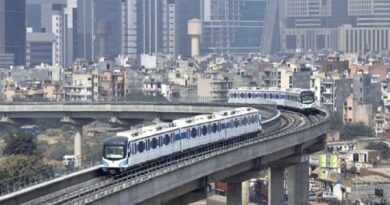Property Prices in Delhi Have Already Climbed By 43 Percent Since the Global Pandemic Began
 The transition, as per industry experts, will adversely impact high-value secondary sales.
The transition, as per industry experts, will adversely impact high-value secondary sales.
“The proposed change in transfer charges will trigger the onset of trading costs in transfer cases.” This shift will marginally enhance the value of property purchases in the primary market from the builder, potentially favouring the deal. The revenue made on the account, on the other hand, will insinuate better funds with urban local bodies to conduct improvement of infrastructure and civic services within the metropolitan area,” stated “Ashutosh Kashyap, Director, Advisory Services, Colliers India.
“This action imposes an extra burden on homebuyers.” At a time when home loan rates have already begun to ascend and the Reserve Bank has indicated additional policy premium increases to subdue resolutely high inflation, the decision to increase transfer duty will jeopardize the sector’s much-needed healing,” replied Amit Goyal, CEO of India Sotheby’s International Realty.
As per the Real Estate prices Tracker Report 2022, the Delhi-NCR has already seen the highest 11.3 percent year-on-year impact on the housing prices to Rs 7,363 per square foot in the January-March period of 2022, as designers raise prices due to robust sales and higher input prices.
Since the start of the pandemic two years ago, real estate prices in Delhi alone have increased by 43 percent.
As shown in a recent Reuter’s poll, property prices in Mumbai and Delhi, along with the neighbouring National Capital Region, are projected to increase between 4% and 5% this year and next. “Improving demand and an upsurge in inflationary trends of basic raw materials in the construction industry such as cement, steel, and labour are the key factors that are likely to push property prices northward,” said Anuj Puri, chairman of ANAROCK Property Consultants.
“Statutory transactions and taxes raise the cost of owning a house, forcing buyers to spend a lot more money or take out larger loans. On the great scale of things, another 1% is not a big deal, but it will sting buyers of all stripes. This increase may also make a contribution to a minor increase in housing prices “Bankbazaar.com CEO Adhil Shetty stated.
In Delhi, properties are subdivided into the following categories based on the geographical location: A, B, C, D, E, F, G, and H, and the Delhi government collects stamp duty on the sale and purchase of properties.
Golf Links, Vasant Vihar, Sunder Nagar, and Jor Bagh are examples of upmarket and upscale colonies in categories A and B. Middle-income neighbourhoods include Lajpat Nagar, Alaknanda, Bhogal, and Amar Colony, among others, in the C and D category areas.
Geeta Colony, Anand Parbat, and Seikh Sarai are located in E, F, G, and H category areas.
In addition to stamp duty, transfer duty is collected. The increase will only apply to transfer duty and will not affect buyers looking to buy properties under Rs 25 lakh.



